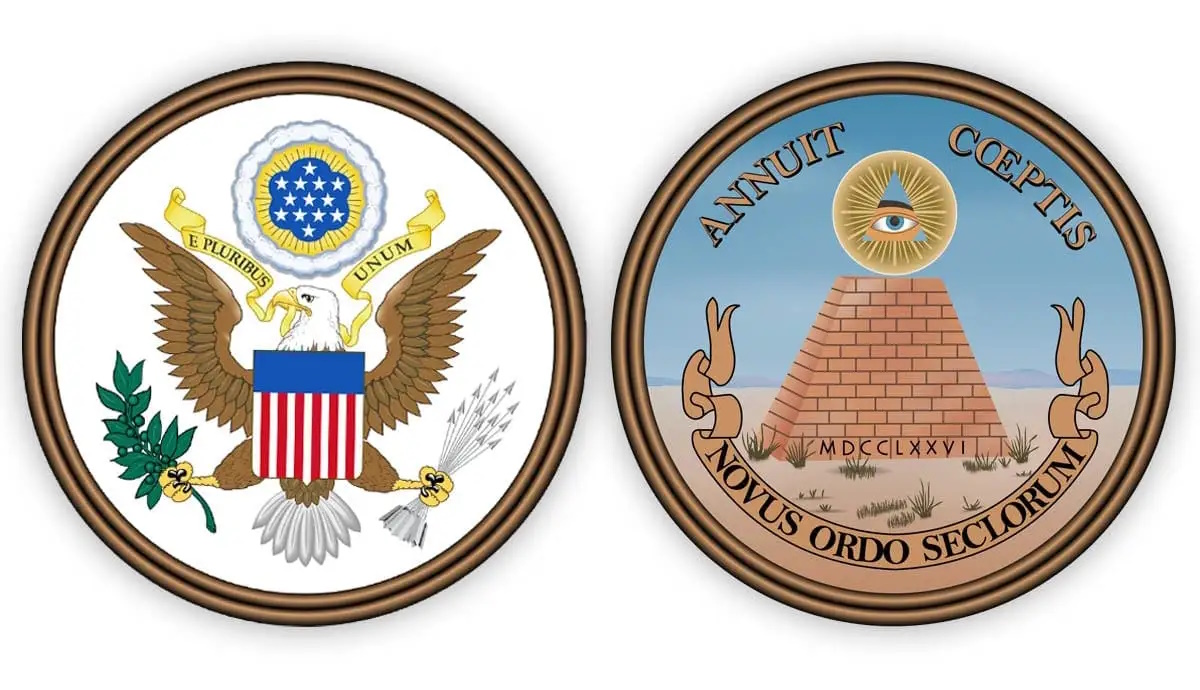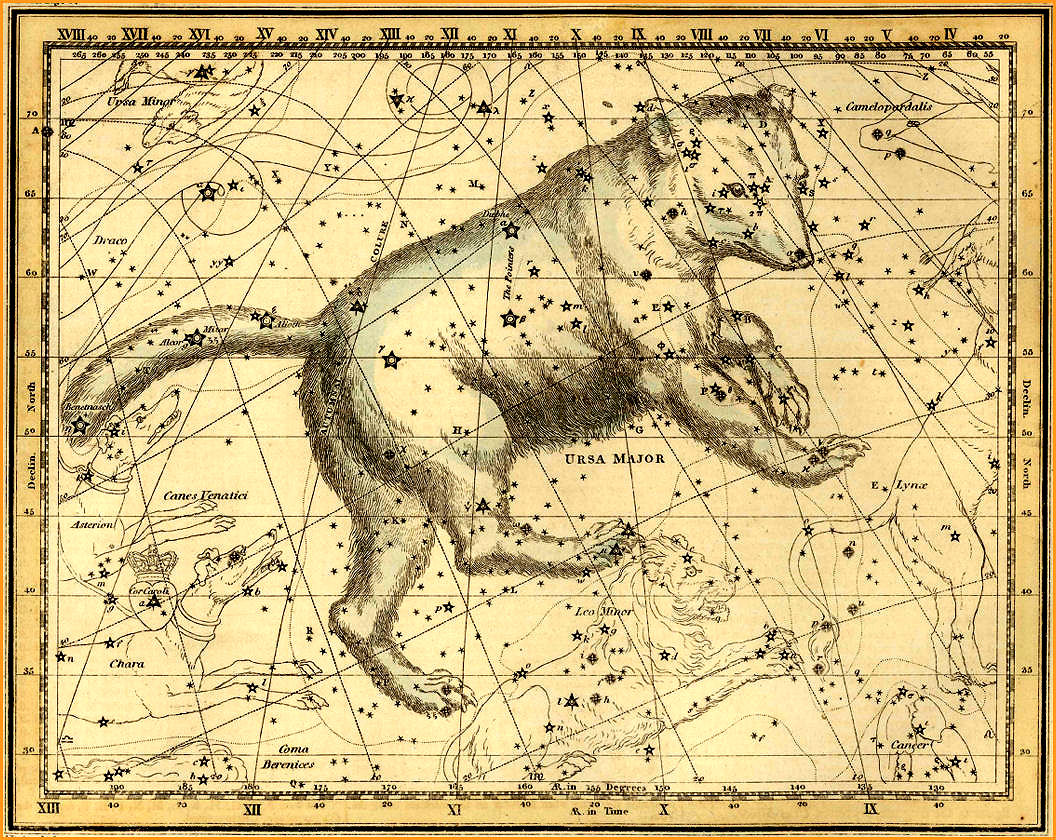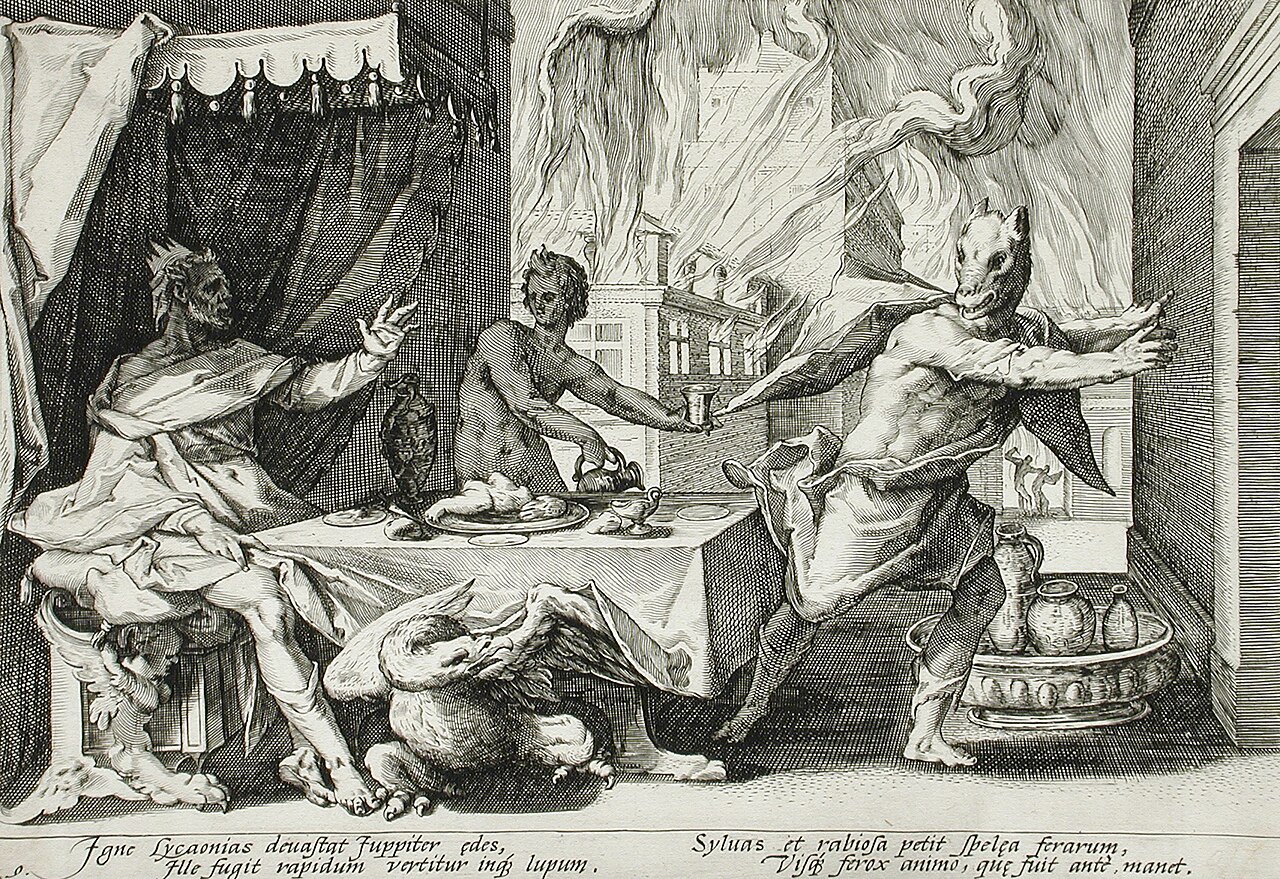
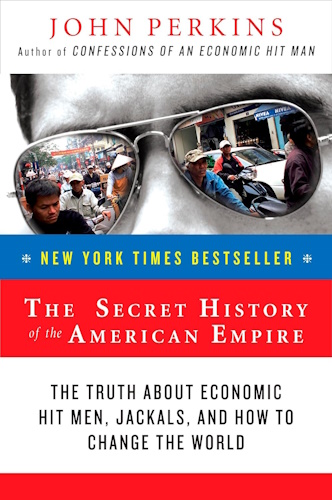

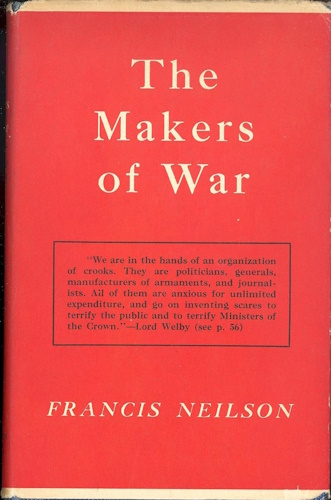

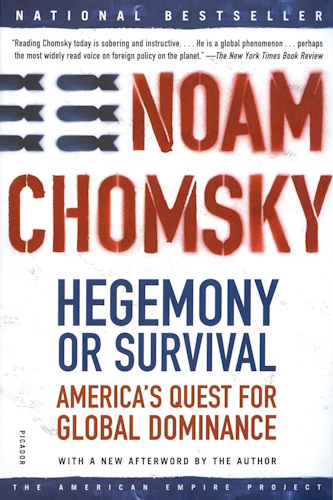



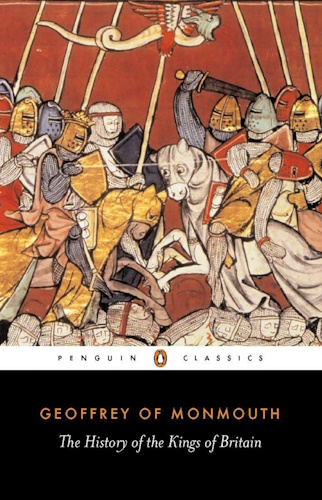

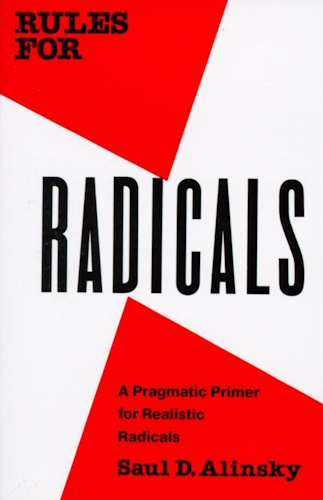

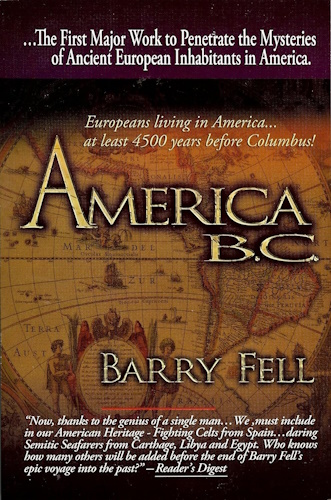

Whence & Pence
A Series
by
Douglas V. Gnazzo
January 6, 2005 - April 18, 2005
(Retrieved from archive.org)
![]()
Part 4: The Resounding
February 7, 2005
INTRODUCTION
The Pope in Rome was Lord Paramount of the Holy Roman Empire, including all emperors and kings under his dominion. All obeyed the Pope, if they didn't want the wrath of God to descend upon them, as only he could call forth. The Knights of the Temple were regarded as the fiercest fighters on Earth, yet they could not remain steadfast against the wrath cast upon them.
In 1095, the Pope sounded a call to arms to fight the Crusades. One hundred and eighteen years later, in 1213, the Concession of England was signed over to the Pope. In 1776, the United States of America declared its independence from Great Britain and the King of England, who, at the time, was also the Holy Roman Emperor, which meant that he was ultimately under the authority of the Pope in Rome.
There is a lot of history between 1095 and 1776, so let's focus in on the period from 1095 to 1213, to see what treasures may lay buried, just out of sight. A legitimate question many may be asking is, who cares what happened between 1095 and 1213, what good is it going to do to know that?
That's where the whence part comes in, as it is hard to discern where one is headed, or shouldn't be headed, unless one knows where they are, and from whence they came to be where they are. As an example, take a look at the back of a one dollar bill. See the pyramid with the eye at the top? That is the eye of Osiris from ancient Egypt staring at you – "the altering eye, that alters all."
Why is Egyptian symbolism on our money, interspersed with some interesting Latin phrases? Another coincidence? Well, here's another: the coat of arms of the Masonic Order known as the Identity Of The Grand Orient Of Italy (click on link to see picture) looks pretty darn close to the back of our dollar bill. Notice how the shadow on the pyramid is on a different side, however. Compare the link above to the picture below.
But once again, this is probably all just coincidence; otherwise, it would mean that someone has gone to great lengths to make some serious plans, all throughout history – very carefully, very clandestinely, and very effectively; but for what possible reasons? That's where the pence comes into play.
It almost sounds like a game is being played, with acts and actors, scores and boars, and even an occasional, adoring whore – especially the one from Babylon, but that comes later, near the ending, the grand finale of the rendering. Perhaps this is what precipitated Benjamin Disraeli, former Prime Minister of England, to say:
"Governments of the present day have to deal not merely with other governments, with emperors, kings and ministers, but also with the secret societies which have everywhere their unscrupulous agents, and can at the last moment upset all the governments' plans."
What has enabled one half of one percent of the world's population to own 95% of everything? And who is this elite one-half percent? From whence did they come, and by what means did they obtain such a dominant position over the rest of the world? Questions seldom asked, and almost never answered.
The Knights Templar provided the first international banking network, so they were the progenitors of today's banking system. From whence did the idea of central banking, fractional reserve lending, and paper fiat money come from? What were the goals of such a monetary system based on dept? So onward with our quest, in search of whence Disraeli spoke, to see what precipitated the precipitation – from whence came the precious pence. Perhaps wise King Solomon will have some answers.
THE STAGE IS SET
The political background just prior to the Crusades and the schism of the Church clearly shows the inter-connectedness of what appears, on the surface, to be unconnected events. But appearances can be deceiving:
"Who could not choose but wonder too at the strange dexterity of fortune's operation, the facility with which she makes one event the spring and motion to something wholly different, uniting every scattered accident and loose particular and remote action, and intervening them together to serve her purpose; so that things that in themselves seem to have no connection or interdependence whatsoever, becomes in her hands, so to say, the end of the beginning of each other". [Plutarch]
The Normans began settling the Northern area of France starting in the ninth century. They were of Danish and Scandinavian descent. Rolf was a Norse Chieftain or Viking from the Scandinavian Peninsula. In 900, Rolf sailed into northern France by way of the English Channel, and took possession of the northwest corner of France.
In 911, King Charles of France granted Rollo the possession of Rouen. Rollo was baptized Robert and his wife, Grisela, the daughter of King Charles, together gave birth to the first dukes of Normandy. Richard I was a grandson of Rollo; and William II was the son of Robert II "le Diable," duc de Normandie. Click on the link to see some most interesting lines of descent, including pedigree from the House of d'Anjou – they who are fond of Lions.
In 1053, the Normans, led by Robert Guiscard, were starting to make inroads into Italy. Pope Clement IX led an army against them, but was defeated. But how quickly fortune turns with the toss of the dice: for in 1059, Pope Nicholas II granted Robert Guiscard the duchies of Apulia, Calabria, and Sicily, the price – an oath of fealty and a pledge to defend the Church. In the next several years Robert invaded Sicily with his younger brother Roger, soon to be Roger I of Sicily, conquering: Messin, Palermo, and southern Abruzzi.
In the beginning, the Normans rented their services out as mercenaries to the highest bidder.
Slowly, over time, their power and wealth increased, and they began to grow and spread out; eventually, William the II conquered England, in 1066.
THE SCHISM
In 1054, the schism of the Church occurred, separating Eastern Orthodoxy from Western Catholicism. The churches differed on most issues, from theological to political. Many reasons are given for the split, however, the main cause was one of the main controversies throughout history: the supremacy of the Pope in Rome, not only in regards to the other five patriarchates, but concerning the Holy Roman Emperor and other Kings as well.
The Roman Emperor moved from Rome to Constantinople. This led to a split between bishops following the Pope in Rome and those following the Emperor in Constantinople. The question of the supremacy of the Pope has led to many world-shaking events down through the ages, some affected the course of world history. The issue is referred to as the Investiture Controversy.
Quite often, the investiture controversy involved the excommunication of Kings, Emperors, and other Popes – called antipopes. Intertwined within this Gordian Knot was the practice of simony or the selling of Spiritual favors for profit, which caused many to question the Spiritual Holiness of the Church, and hence its right of supreme authority. We have seen in Whence & Pence, Part Three: The Sounding how Dante wrote about several Popes that were condemned to the eighth circle of Hell for simony; including: Pope Nicholas III, Pope Boniface VIII, and Pope Clement V.
THE TWO HATS
The Pope of Rome fulfills two functions: the primary role supposedly being that of the Spiritual leader or Vicar of Christ on Earth; the second being the head of the sovereign State of Vatican City, which is an independent city-state within Rome. Hence the words sacoreum and seclorum; the sacred or holy spiritual world; and the temporal or secular world.
The Roman Curia or Pope's Court functions as the government of the Catholic Church. Fascinating how seclorum shows up on the back of our dollar bill, just under the pyramid from Egypt, the one with the eye of Osiris on top. Wonders never cease.
The One Holy Catholic and Apostolic Church was ruled by five patriarchs: those of Rome, Constantinople, Antioch , Alexandria, and Jerusalem. The Roman Church has always maintained that the Pope was the head of the entire Church, including all five patriarchates. This supremacy issue has always been a focal point of contention. Note how these five patriarchates show up in the all important trade routes from whence the pence was had.
The complete formal title of the Pope sums up the view held by the Holy Roman Catholic Church in regards to the supremacy issue:
"Bishop of Rome, Vicar of Jesus Christ, Successor of the Prince of the Apostles, Supreme Pontiff of the Universal Church, Patriarch of the West, Primate of Italy, Archbishop and Metropolitan of the Roman Province, Sovereign of the State of the Vatican City, Servant of the Servants of God"
Also most telling, was the Pope's reply at the Council of Claremont, in 1095, when he stated that he wanted nothing more than to repair the schism of the Church and to re-unite the East with the West, by and under papal supremacy, as he was "chief bishop and prelate over the whole world."
TRADE ROUTES
The various trade routes have always been what "it" is all about, it being the struggles, the wars, the politics, the greed that drives men to unconscionable acts, all for profit or Lucre. In the ancient world, around the first century BC, international trade was already highly developed, as it had its beginnings as far back as 1000 BC.
There were five main power centers involved: the Roman Empire, the Parthian Empire, the Kushan Empire, the Nomadic Confederation of the Xiongnu, and the Han Empire. The main cities along these routes were of vital importance to the nations, empires, royal families, and individual international merchants that were involved in the trade.
Click on Map of Ancient Trade Routes from Mesopotamia and Rome: Map of Trade Routes to see the highways and byways of world trade during the time period. Note the cities of Basra, Memphis, Jerusalem, Tyre, Sidon, Antioch, Damascus, Babylon, and Kashmir.
King's Highway was the route from Egypt across the Sinai, through Jordan and into Syria; then on to Damascus and Palmyra, ending at the Euphrates.
Silk Road was the route from Baghdad to Kashmir, China.
Way of the Sea was the route through Palestine by way of the coast, cutting through Megiddo and on to Damascus.
Royal Road was the route in upper Turkey, beginning at Smyrna, crossing the land of the Hittites, into Armenia, and ending at Babylon.
Lower Road was a later version of the Royal Road, which began in Ephesus, traveling across southern Turkey, into Syria, through Aleppo and ending at Babylon.
Amber Road was the route that began in north Italy, cutting through Yugoslavia to the Danube in Hungary.
The Trans-Saharan route crossed the Sahara linking the Mediterranean with West Africa. This route was heavily involved with the trade of gold, salt, and slaves.
These are just some of the main arteries of a network of trade routes that spanned across the land from East to West. For a more detailed explanation the study Old World Traditional Trade Routes (OWTRAD) Project is a good source (click on link). The geographic location of the Middle East, being between the Far East and Europe, was of obvious importance, affording a central hub, where the East intersected with the West, a literal crossroads. The trade routes weaved their way through the desert sands, over rugged mountain peaks, and across rough seas, plying the goods of world trade across the land.
The Holy Roman Catholic Church was well aware of, and did not underestimate, the importance of the major trade centers, as it wasn't by coincidence that the Church just happened to be split into five patriarchates that included five of the major trade centers (cities) in the region; or why some of the Noble Crusaders seemed intent on first carving out their favorite territory, and then saving Jerusalem, which was a major center and would be of great monetary value to he that ruled it.
THE PLAYERS
In part three, The Sounding, a listing of the various factions or armies that were delegated by the Pope to go on the First Crusade was given. Mention was made of the Nobles that led the various groups. The five factions were not just delineated by the names of their leaders, but also by the geo-political regions they were from, which gave each group a somewhat different agenda, according to the precipitation of that region.
Raymond of Toulouse represented the Provencal element in the first Crusade, as Bohemund represented the Norman, and Godfrey and Baldwin the Lotharingian. Robert led the Flemish faction; and Robert Duke of Normandy led the Knights and Nobles of Northern France.
Notice how there were two separate factions of Normans: one led by Bohemund I of Antioch, who was also Count of Taranto; which included Roger I who was the ruler of Sicily; and Tancred, Prince of Galilee, nephew of Bohemund, and grandson of Robert Guiscard.
The second group was led by Robert Duke of Normandy, who was the older brother of King William II of England, their father being William the Conqueror; Stephen II Count of Blois and Count of Chartres; and Hugh of Vermandois called "the Great", who was the younger brother of King Philip I of France.
Needless to say, this was not a motley crew, of fools or otherwise, although the joker may have had a part in it all – the King of the Court Jesters, who can trumph almost all.

Prior to the year 850, the Carolingians appointed the Counts of Toulouse. From about 500-800 the Merovingians were kings and dukes in both Aquitaine and Toulouse. Prior to the Merovingians, the Visigothic Kings ruled the region.
Raymond IV was count of Toulouse; count of Saint Gilles, a town in Southern France, which had a very cool Monastery, which can be seen with by clicking on Pictures of the abbey church that shows beautiful stone carvings of the Crusades; and he was also Margrave of Provence. He was said to be the richest of the Nobles that went on the Crusade, representing the Provencal element. They were a well established family.
Raymond IV was descended from Raymoind I of Toulouse, who in turn was descended from Duke Dagobert Of Franks. As can be seen, his family goes way back. Raymond refused to follow Bohemond I and Godfrey de Bouillon in swearing fealty to the Byzantine emperor Alexius I.

Raymond wasn't very fond of Bohemond I, and fought with him over Antioch; and with Godfrey over the Tower of David. He had a little run in with Tancred as well, who threw Toulouse in the dudgeon. Raymond claimed to have found and taken possession of the Holy Lance, and he established the county of Tripoli. His coat of arms is most telling, as it closely resembles many others, especially the Templar's.
Bohemund I of Antioch was the count of Taranto before going on the Crusade; and after the Crusade he was the ruler of Antioch. It appears that Bohemund had his gaze fixed on Antioch before he even left for the Holy Lands.
Bohemund had fought with his father, Robert Guiscard, against Alexius I the Byzantine Emperor. This prior hostility with one another entered into the politics of the First Crusade. For awhile, Bohemund and Alexius played nice, but that too came to pass; and Alexius ended up the winner – Bohemund lost almost all the influence and power that he and his father before him had established.
To digress a bit, but to show the inter-connectedness of all these coincidences, Bohemund at the start of the First Crusade was fighting with his uncle, Roger I count of Sicily, against the Island of Amalfi. As will be seen, all these cities and Islands were very important points in the Trade Routes, which plays into the pence part of all this. Almafi was also home to the Knights Hospitaller or the Order of Knights of Saint John.

Now here's another one of those unexlainable coincidences: the second Grand Master of the Hospitallers was Raymond du Puy de Provence, who was from the same family or House as Adhemar of Le Puy, the Papal Legate of the First Crusade. And, as if that wasn't enough, here is what the Coat of Arms of the Order looked like. It's almost as if a pattern were developing – even if it's a pattern of coincidences.
Tancred was the grandson of Robert Guiscard and Bohemund was his uncle. Needless to say, they were of the same bloodline. Tancred refused to swear the oath of fealty to the Emperor Alexis I, as he did not trust the Byzantines, nor did he want to share any of the spoils of conquest with them. During the siege and capture of Jerusalem, Tancred is said to have tried to save hundreds of Muslims by placing them in and on the Temple. But his efforts were in vain, as all the Muslims were slaughtered.
Tancred was originally the Prince of Galilee, but Baldwin I ended up forcing him to give the principality up, trying to reign in Tancred's power and influence. He then became regent of Antioch for Bohemund. In 1110, Tancred captured the famous and very strategically important castle Krak des Chevaliers, which means, fortress of the knights, as it was the headquarters of the Knights Hospitallers in Syria. Tancred was young blood, and very determined.
Robert Duke of Normandy was the son of William the Conqueror. Robert didn't get along with his father or brothers, William Rufus and Henry, both who later became Kings of England. Henry was the closest to Robert, and expressed his brotherly love by conquering Normandy and throwing Robert into the dungeon for the remainder of his life. Robert had married Sybil, the grandniece of Robert Guiscard.
Stephen II was the count of Blois and Chartres, Blois being the home to many Royal families. In 1080, he married one of William the Conqueror's daughters, Adela of Normandy. Their third son named Stephen de Blois, became the King of England.
Hugh of Vermandois was the brother of King Philip I of France and count of Vermandois. He married Adela (Adelheid) daughter of Heber IV Count of Valois and Adela de Vexin.
Saint Bernard of Clairvaux was Abbot of Clairvaux and patron of the Templars. André de Montbard was his nephew. Bernard resided in the domains of the Comte de Champagne. In 1128, he presided over the council of Troyes to officially incorporate the Templars into the Church. He was the founder of the Cistercian Order of monks.
André de Montbard was one of the founding members of the Knights Templar and was their third Grand Master. Andre was also a member and Grand Master of the Priory of Sion. He was the uncle of Saint Bernard and lived in the domains of the Comte de Champagne.
Hughes, Comte de Champagne: was the Overlord of Saint Bernard and of Andre de Montbard. He donated the land to Bernard that the abbey of Clairvaux was built upon. Along with Montbard he was one of the founding members of the Templars. Hughes hosted the council of Troyes in 1128, which recognized the Templars as being under the protection of the Church.
Hughes' title of Overlord sums it up quite succinctly – as he was the Overlord to one of the founding members of the Knights of the Temple, who also was Grand Master of the Prior de Sion; and to the papal representative or patron of the Knights of the Temple, St. Bernard.
Hughes de Payens was the first Grand Master of the Knights Templar. He was the cousin of the Comte de Champagne. Theocletes, Grand-Pontiff of the Order of the Temple of the Nazarene sect, was said to have been his teacher of the ancient ways.
Baldwin of Boulogne was the brother of Godfrey de Bouillon. Along with Tancred, Baldwin had split off from the main group of Crusaders, and headed towards Edessa. It would appear that both Tancred and Baldwin were more interested in the conquest of private spoils, then in saving Jerusalem. Baldwin was count of Edessa, and first king of Jerusalem, upon Godfroi's death.
Godfroi de Bouillon was Duke of Lower Lorraine. He founded the Order of Notre Dame de Sion, later named the Prieuré de Sion. Godfroi accomplished a plenitude of deeds throughout his life, most of which have already been memorialized by numerous writers, however, as the saying goes: "sometimes it's not what you know, but whom you know", and this applied quite well to Godfroi. The founding of the Order of Notre Dame de Sion is most telling, all on its own.
So whom did Godfroi de Bouillon know? It would be easier and take less time to mention who he didn't know. His lineage reads like a who's who of Royalty – on both his father's side and his mothers. But from whence does this thing called Royalty come?
Royal is from the Latin regalis and rex or Regis – King. And how does one obtain to be King? Usually from a direct line of descent, from a father, who was King before, and from his father before him, or some other familial relationship.
Perhaps this explains why most of the Kings and Queens down through the ages are cousins from the same lines of descent. Often times the claim to Kingship required fighting wars with ones archenemies. He who was the strongest, and had the better army, would win the day – and the spoils or pence, especially the royal crown. It seems that kinship and kingship are related.
Godfroi de Bouillon was descended from Lothar, Dagobert, and even further back from the Descendant Chart for Carolus I Magnus, empereur auguste. Dagobert was one of the Fisher Kings or Merovingians, whose founding King is said to be Merovech. And from whence Merovech?
Merovech was said to have had two fathers. A Quinotaur or Bistea Neptunis raped his mother, already pregnant by King Chlodio, while she was swimming in the ocean.
"It was the Arcadian legacy that was responsible for the the mysterious sea beast - the Bistea Neptunis - as symbolically defined in the Merovingian ancestry. The relevant sea-lord was King Pallas, a god of old Arcadia. His predecessor was the great Oceanus. The immortal sea-lord was said to be 'ever-incarnate in a dynasty of ancient kings' whose symbol was a fish."
Notice the words "ever-incarnate in a dynasty of ancient kings". Arcadia refers back to ancient Greece, so we are talking about a wee bit of history here. The Merovingians were the line known as the Fisher Kings. Godfroi de Bouillon claimed descent from them, and many of the other Noble Knights we've seen were related as well. Who today, might be the descendents of this "beast"? Things just keep getting curiouser and curiouser, as Alice would say.
And as if that weren't enough, there's always the words of the Bible, which clearly addresses the lineage question, as it has a entire chapter devoted to it – Genesis. The part that talks about seeds, those things from whence other things come, is most telling:
"And the LORD God said unto the serpent, Because thou hast done this, thou art cursed above all cattle, and above every beast of the field; upon thy belly shalt thou go, and dust shalt thou eat all the days of thy life:
And I will put enmity between thee and the woman, and between thy seed and her seed; it shall bruise thy head, and thou shalt bruise his heel."
The above is from the scene in the Garden of Eden, after the Devil, disguised as the Serpent, beguiled Eve, and the Lord is now admonishing him. Note the mention of "thy seed and her seed", which seems to indicate there are two distinct seeds.
Why is the Lord talking about seeds, let alone putting "enmity between thy seed and her seed"? Perhaps Cain and Abel provide an answer. It truly is a Gordian Knot, but it is beginning to slowly unravel. Sometimes truth is stranger than fiction.
THE PIECES
The Knights arrived unprepared, as far as having a sufficent stock of food and other supplies needed to fight a Crusade. It appears they thought that the Byzantine Emperor Alexius I, was going to supply all of their needs. Alexius was very willing to oblige the Crusaders, all they had to do was to take an oath of fealty and pledge their allegiance to him; and agree to hand over to the Byzantine Empire, any and all lands captured from the Turks. Apparently, Alexius was well versed in the ways of negotiation. All the Knights swore the oath, except for Raymond IV of Toulouse and Tancred.
The Crusaders first major battle was for Nicaea, which involved a long and ardous siege. After all the blood, sweat, and effort that went into the siege, Alexius I, who was not involved in the battle, negotiated a secrete peace treaty with the Turks for Nicaea. The Knights were more than a bit upset with the emperor. Just to be extra nice, Alexius didn't allow the Crusaders access to the city in large numbers. Next on the agenda – the march to Antioch, and then on to Jerusalem.
On their way to Antioch, after passing through the Cilician Gates, Baldwin decided to head off on his own towards Armenia. He had an epiphany that told him that too many cooks spoil the broth, so he went to where the pickings were easier, and became the ruler and Count of Edessa. Tancred decided to tag along, to tie up any loose ends that Baldwin might leave undone.
While Baldwin and Tancred were playing around in Edessa, the other Knights marched on to Antioch, which was a major trade route center. Once again they laid siege to the city, which lasted almost a year. It is here at Antioch that Bohemund I showed his true colors, as he wanted the city for himself. He bribed the guards to open the gates and the Crusaders captured the city. Bohemund then decreed that Alexius I had broke his agreement with the Knights, thus invalidating their pledge to him. Surprise, surpirse. Who would have thought?
In 1099, the Crusaders marched off towards Jerusalem, without Bohemund, he stayed at Antioch to rule the city. I guess he wasn't all that interested in saving Jerusalem, he was content with Antioch. The siege of Jerusalem was not a pretty sight – for either side. Godfroi de Bouillon was made the ruler of the city, but did not claim the title of King – that was left for his brother Baldwin to do the following year. Apparently Baldwin was a bit overzealous, perhaps high strung.
Tancred was no ones fool, as he never swore allegiance to Alexuis I, and he claimed the Temple of the Mount, by what authority, one can only conjecture; as Godfroi de Bouillon was the ruler of Jerusalem and Advocatus Sancti Sepulchri, so he must not have opposed Tancred, otherwise Tancred would not have kept the Temple.
Also, the following year, Godfroi's brother, Baldwin, was crowned King of Jerusalem, and he didn't take the Temple away from Tancred as well. For such a major site to be claimed without contest or dissent, suggests a plan was had beforehand – as the Temple of the Mount was the most highly prized possession of the Crusade, for more than just the obvious reason of being sacred ground to all three monotheistic religions – something to do with King Solomon.
REFLECTIONS
It seems rather odd that neither Godfroi or Baldwin laid claim to the Temple, as that was supposedly their goal – to win Jerusalem back from the Muslims, for the Church in Rome, and the Temple of the Mount was, along with the Church of the Holy Sepulcre, the most sacred and sought after prize. But then again, a lot of stuff with these Knights doesn't seem to quite add up, or perhaps it adds up all too well.
For instance, they took vows of poverty, etc., yet some of them were extremely wealthy, before and after the Crusades. And it seems odd that the Holy Roman Catholic Church has others take vows of poverty, while it collects one of the worlds largest fortunes – in land, holdings, gold and silver, precious jewels, etc.? Did Christ advocate having all these possessions? If not, then why does the Church and the Vicar of Christ have all these possessions?
Also, originally there were only nine Knights of the Temple, for several years they alone took possession of Solomon's Temple, without any more Knights joining the order. Now the Knights were supposedly there to protect travelers to the Holy Lands. How are nine Knights going to protect anybody against entire armies? Granted, later as their ranks grew, both in size and in resources, they became quite capable of such. But what did they first do in Jersusalem during those several years before taking on new members? Whatever it was, it had to do with Solomon's Temple. Maybe they prayed a lot, but what were they praying for?
And remember, St. Bernard's call when made was a sounding to arms of "sceleratos et impius, raptores et homicidas, adulteros", which roughly translates as "the wicked and the ungodly, rapists and murderers, adulterers". Why would the Church accept such as being worthy of entering a special order of monks? The successful conversion rates must have been miraculous.
The Knights Templar can be traced back to the Prieure de Sion. The two founding members of the Templars were Hughes de Payen and Andre de Montbard; Andre was a member of the Prieure de Sion, his Overlord was Hughes de Champagne. These guys were le crème de le crème. Some would even say they were Kings of Kings, and brothers and cousins to others.
A small group of monks from Calabria, Italy, founded the Orval Abbey in France, in 1070. This group of monks started the Order de Sion. Godfroi de Bouillon "folded" them into the Order, in 1099. Also, much has been written that the Merovingians were descended from the Visigoths, who in turn had migrated from Arcadia. There are both paintings and literature concerning Arcadia. Coledridge seems to have had it on his mind when he wrote his famous poem:
Kubla Khan
In Xanadu did Kubla Khan
A stately pleasure-dome decree:
Where Alph, the sacred river, ran
Through caverns measureless to man
Down to a sunless sea...
So twice five miles of fertile ground
With walls and towers were girdled round:
And there were gardens bright with sinuous rills,
Where blossomed many an incense-bearing tree;
And here were forests ancient as the hills,
Enfolding sunny spots of greenery.
And from this chasm, with ceaseless turmoil seething,
As if this earth in fast thick pants were breathing,
A mighty fountain momently was forced:
Amid whose swift half-intermitted burst
But oh! that deep romantic chasm which slanted
Down the green hill athwart a cedarn cover!
A savage place! As holy and enchanted
As e'er beneath a waning moon was haunted
By woman wailing for her demon-lover!
Huge fragments vaulted like rebounding hail,
Or chaffy grain beneath the thresher's flail:
And 'mid these dancing rocks at once and ever
It flung up momently the sacred river...
The family crest of the Plantards has Et In Arcadia Ego written across the top. The two bears are kind of interesting as well, but the real killer is the eleven bees between them, wonder what that all signifies? If one checks out the lineage of all these families, the name that keeps popping up most often, further back then any other, is the name de Vere.
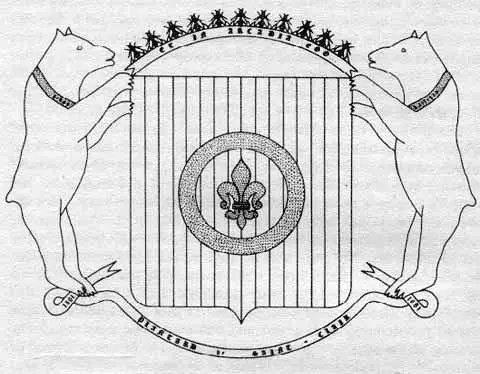
Oedipus
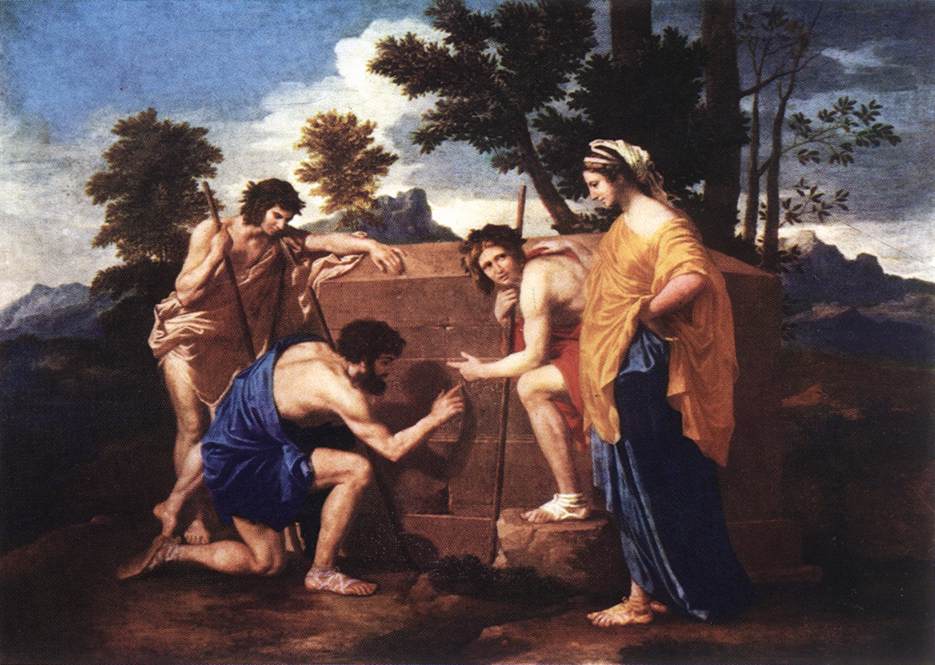
by Nicolas Poussin
The word Arcadia comes from Arkas, patron god of that area of Greece, the son of the nymph Callisto, sister of the huntress Artemis. The Merovingians are said to be descended from the Trojans; and Homer wrote that Troy was founded by a colony of Arcadians.
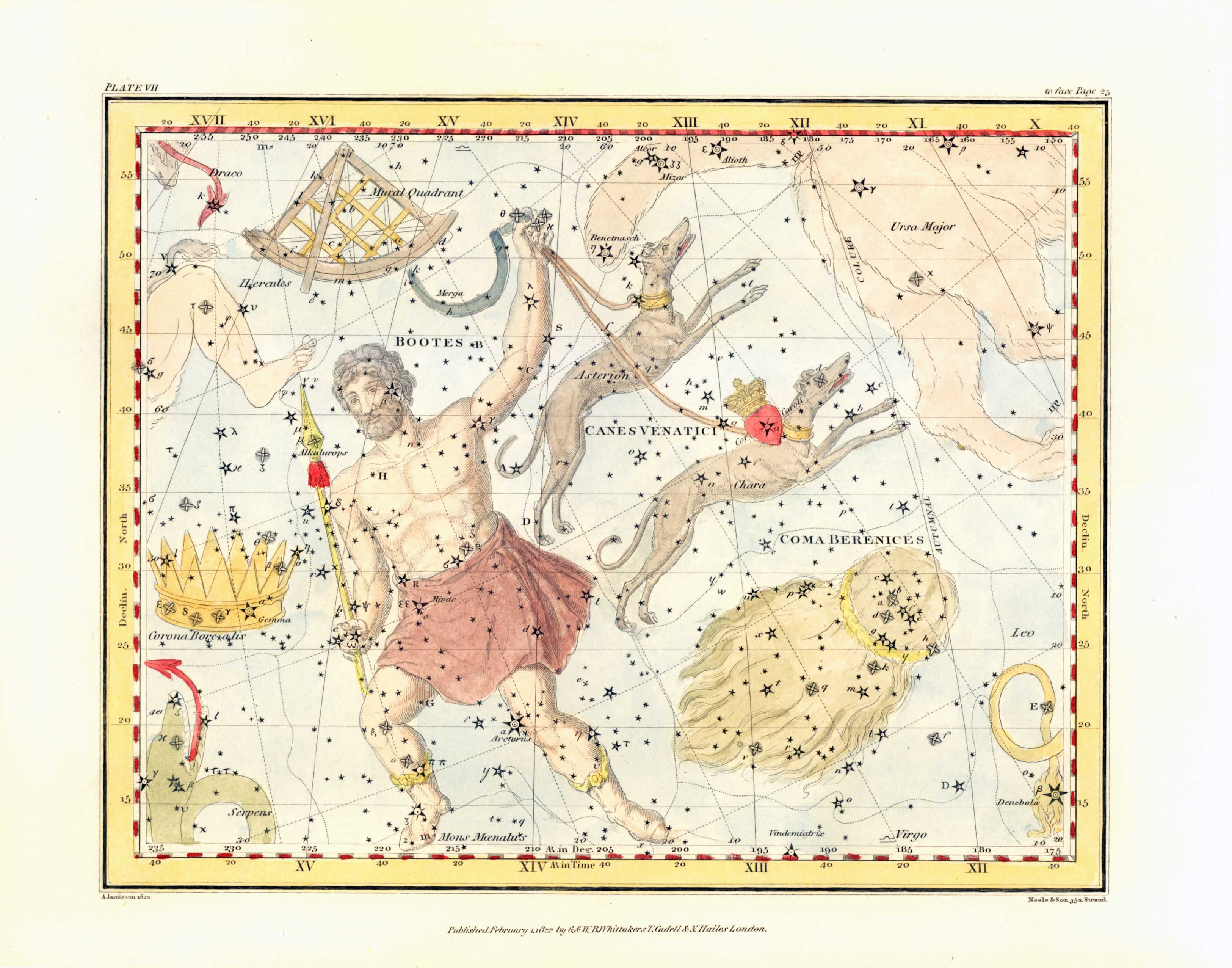
The constellation Bear-Watcher or Bootes is Arcas 1. It is said that when Arcas 1 was grown up and was hunting in the woods, he saw his mother Callisto turned into a bear and, not recognizing her, tried to kill her. He then chased her into the temple of love Lycaeus, where the penalty for entering is death, according to Arcadian law. Since both would have to die, Zeus, they say, snatched them up and made them immortal putting them among the stars. This is why Arcas 1 is seen in the sky following the Bear, which is his mother Callisto. Arcas I is called Arctophylax for he guards Arctos (the Great Bear).
The constellation Great Bear (Ursa Major) is Callisto who was changed into a bear by Artemis and placed among the stars by Zeus. The constellation the Lesser Bear shows Cynosura, an Idaean nymph and nurse of Zeus who was among the CURETES.
Lycaon 2 is the king of Arcadia who caused the wrath of Zeus to destroy the world.
"One house has fallen; but not one house alone has deserved to perish."
[Ovid, Metamorphoses]
Part V will be forthcoming to continue the Odyssey of undoing the Gordian Knot.
![]()
© 2005 Douglas V. Gnazzo
![]()
![]()
![]()
Disclaimer:
Some material presented will contain links, quotes, ideologies, etc., the contents of which should be understood to first, in their whole, reflect the views or opinions of their editors, and second, are used in my personal research as "fair use" sources only, and not espousement one way or the other. Researching for 'truth' leads one all over the place...a piece here, a piece there. As a researcher, I hunt, gather and disassemble resources, trying to put all the pieces into a coherent and logical whole. I encourage you to do the same. And please remember, these pages are only my effort to collect all the pieces I can find and see if they properly fit into the 'reality aggregate'.
Personal Position:
I've come to realize that 'truth' boils down to what we 'believe' the facts we've gathered point to. We only 'know' what we've 'experienced' firsthand. Everything else - what we read, what we watch, what we hear - is what someone else's gathered facts point to and 'they' 'believe' is 'truth', so that 'truth' seems to change in direct proportion to newly gathered facts divided by applied plausibility. Though I believe there is 'truth', until someone representing the celestial realm visibly appears and presents the heavenly records of Facts And Lies In The Order They Happened, I can't know for sure exactly what "the whole truth' on any given subject is, and what applies to me applies to everyone. Until then I'll continue to ask, "what does The Urantia Book say on the subject?"
~Gail Bird Allen
![]()
![]()














-
Urantia Book, 44:0.11 - The Celestial Artisans
Never in your long ascendancy will you lose the power to recognize your associates of former existences. Always, as you ascend inward in the scale of life, will you retain the ability to recognize and fraternize with the fellow beings of your previous and lower levels of experience. Each new translation or resurrection will add one more group of spirit beings to your vision range without in the least depriving you of the ability to recognize your friends and fellows of former estates.
-
Princess Bride 1987 Wallace Shawn (Vizzini) and Mandy Patinkin (Inigo Montoya)
Vizzini: HE DIDN'T FALL? INCONCEIVABLE.
Inigo Montoya: You keep using that word. I do not think it means what you think it means. -
Urantia Book, 117:4.14 - The Finite God
And here is mystery: The more closely man approaches God through love, the greater the reality -- actuality -- of that man. The more man withdraws from God, the more nearly he approaches nonreality -- cessation of existence. When man consecrates his will to the doing of the Father's will, when man gives God all that he has, then does God make that man more than he is.
-
Urantia Book, 167:7.4 - The Talk About Angels
"And do you not remember that I said to you once before that, if you had your spiritual eyes anointed, you would then see the heavens opened and behold the angels of God ascending and descending? It is by the ministry of the angels that one world may be kept in touch with other worlds, for have I not repeatedly told you that I have other sheep not of this fold?"
-
Urantia Book, Foreword - 0:12.12 - The Trinities
But we know that there dwells within the human mind a fragment of God, and that there sojourns with the human soul the Spirit of Truth; and we further know that these spirit forces conspire to enable material man to grasp the reality of spiritual values and to comprehend the philosophy of universe meanings. But even more certainly we know that these spirits of the Divine Presence are able to assist man in the spiritual appropriation of all truth contributory to the enhancement of the ever-progressing reality of personal religious experience—God-consciousness.
-
Urantia Book, 1:4.3 - The Mystery Of God
When you are through down here, when your course has been run in temporary form on earth, when your trial trip in the flesh is finished, when the dust that composes the mortal tabernacle "returns to the earth whence it came"; then, it is revealed, the indwelling "Spirit shall return to God who gave it." There sojourns within each moral being of this planet a fragment of God, a part and parcel of divinity. It is not yet yours by right of possession, but it is designedly intended to be one with you if you survive the mortal existence.
-
Urantia Book, 1:4.1 - The Mystery Of God
And the greatest of all the unfathomable mysteries of God is the phenomenon of the divine indwelling of mortal minds. The manner in which the Universal Father sojourns with the creatures of time is the most profound of all universe mysteries; the divine presence in the mind of man is the mystery of mysteries.
-
Urantia Book, 1:4.6 - The Mystery Of God
To every spirit being and to every mortal creature in every sphere and on every world of the universe of universes, the Universal Father reveals all of his gracious and divine self that can be discerned or comprehended by such spirit beings and by such mortal creatures. God is no respecter of persons, either spiritual or material. The divine presence which any child of the universe enjoys at any given moment is limited only by the capacity of such a creature to receive and to discern the spirit actualities of the supermaterial world.
-
Urantia Book, 11:0.1 - The Eternal Isle Of Paradise
Paradise is the eternal center of the universe of universes and the abiding place of the Universal Father, the Eternal Son, the Infinite Spirit, and their divine co-ordinates and associates. This central Isle is the most gigantic organized body of cosmic reality in all the master universe. Paradise is a material sphere as well as a spiritual abode. All of the intelligent creation of the Universal Father is domiciled on material abodes; hence must the absolute controlling center also be material, literal. And again it should be reiterated that spirit things and spiritual beings are real.
-
Urantia Book, 50:6.4 - Planetary Culture
Culture presupposes quality of mind; culture cannot be enhanced unless mind is elevated. Superior intellect will seek a noble culture and find some way to attain such a goal. Inferior minds will spurn the highest culture even when presented to them ready-made.
-
Urantia Book, 54:1.6 - True And False Liberty
True liberty is the associate of genuine self-respect; false liberty is the consort of self-admiration. True liberty is the fruit of self-control; false liberty, the assumption of self-assertion. Self-control leads to altruistic service; self-admiration tends towards the exploitation of others for the selfish aggrandizement of such a mistaken individual as is willing to sacrifice righteous attainment for the sake of possessing unjust power over his fellow beings.
-
Urantia Book, 54:1.9 - True And False Liberty
How dare the self-willed creature encroach upon the rights of his fellows in the name of personal liberty when the Supreme Rulers of the universe stand back in merciful respect for these prerogatives of will and potentials of personality! No being, in the exercise of his supposed personal liberty, has a right to deprive any other being of those privileges of existence conferred by the Creators and duly respected by all their loyal associates, subordinates, and subjects.
-
Urantia Book, 54:1.8 - True And False Liberty
There is no error greater than that species of self-deception which leads intelligent beings to crave the exercise of power over other beings for the purpose of depriving these persons of their natural liberties. The golden rule of human fairness cries out against all such fraud, unfairness, selfishness, and unrighteousness.


